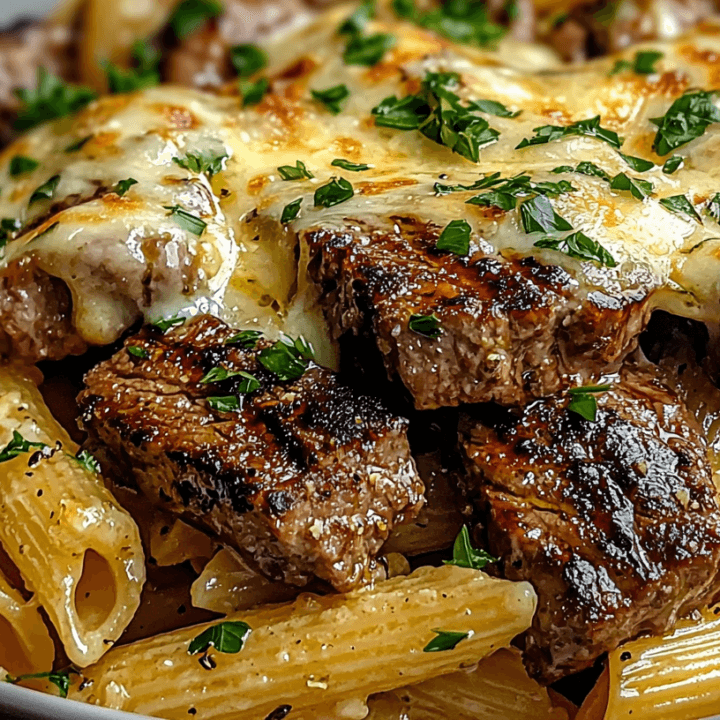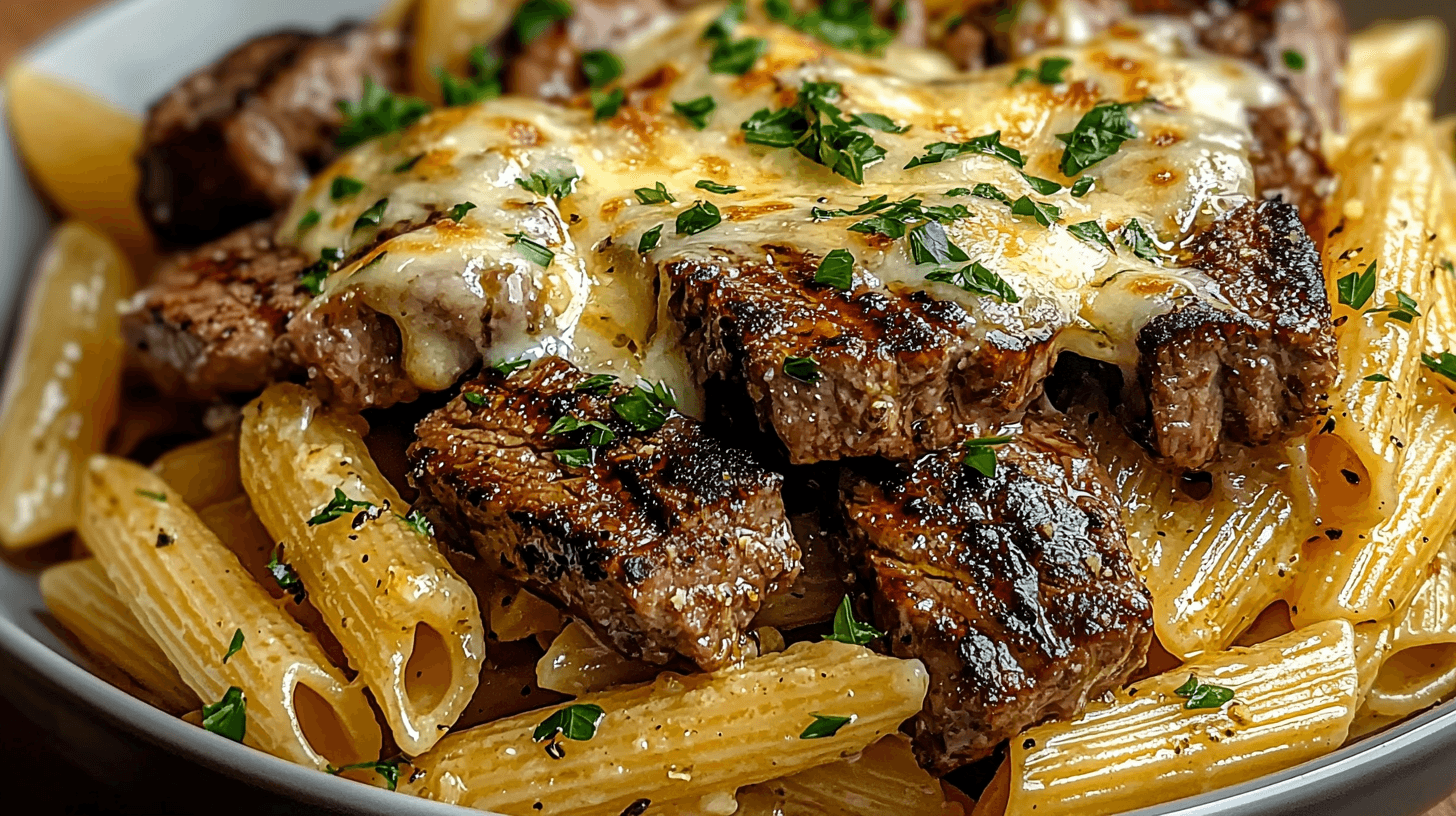Steak and Pasta: Perfect Pairing Tips and Recipes
Introduction:
Few dishes evoke the feeling of indulgence quite like a perfectly cooked steak paired with a hearty plate of pasta. It’s a combination that brings together the best of two culinary worlds—the savory richness of a juicy steak and the comforting allure of a flavorful pasta. Whether you’re preparing a meal for a celebration or just looking to elevate a regular night in, mastering the art of pairing steak and pasta can make any dining experience unforgettable.
This guide will walk you through the essentials of crafting the ideal steak and pasta meal. From choosing the right steak cut and pasta type to cooking techniques and sauces, we’ll cover everything you need to know to create a memorable dish. By the end, you’ll have the tools to build your perfect steak and pasta plate and a few tested recipes to get you started.
Why Steak and Pasta Make the Perfect Pair
Steak and pasta complement each other beautifully. The rich, umami flavors of steak bring depth, while the pasta serves as a versatile canvas that can carry and enhance those flavors. Not only do they pair well in taste, but steak also provides a hefty dose of protein, while pasta offers energy-boosting carbohydrates. This balanced combination makes for a satisfying meal that’s both nourishing and delicious.
Beyond flavor and nutrition, steak and pasta are incredibly customizable. With endless pasta shapes, sauces, and steak cuts to choose from, you can adapt this meal to suit any occasion, mood, or taste preference. And whether you’re a beginner or a seasoned cook, there’s a steak and pasta combination that’s perfect for you.
Choosing the Best Steak Cut for Pasta Dishes
When it comes to steak and pasta pairings, the cut of steak you choose can make all the difference. Some cuts work better with creamy sauces, while others shine with lighter pasta dishes. Here’s a look at a few popular steak cuts and why they work so well with pasta:
Popular Cuts for Steak and Pasta Pairings
- Filet Mignon: Known for its tender, buttery texture, filet mignon pairs beautifully with creamy pasta dishes. Its mild flavor doesn’t overpower the pasta, making it a great choice for lighter, more delicate sauces.
- Ribeye: Richly marbled and packed with flavor, ribeye is perfect for pasta dishes with heartier sauces, such as mushroom or peppercorn. The extra fat content in ribeye creates a luscious flavor that complements bold, creamy sauces.
- Sirloin: Leaner than filet mignon or ribeye, sirloin is an affordable and versatile option. It works well in a variety of pasta dishes, particularly those with tomato-based sauces that add moisture and acidity.
How to Cook the Steak for Perfect Texture and Flavor
Getting the right doneness level is essential for a steak and pasta dish. Cooking techniques like pan-searing or grilling work well with pasta pairings, as they enhance the steak’s natural flavors. A quick sear on high heat will lock in juices, while grilling adds a smoky flavor that pairs wonderfully with herb-based pasta sauces.
Pro Tip: Aim for medium-rare to medium doneness for a balance between tenderness and flavor. This allows the steak to retain its juiciness while still achieving a flavorful crust.
Pasta Pairings and Sauces to Complement Steak
Choosing the right pasta shape and sauce can elevate your steak and pasta meal from good to unforgettable. Here are some pasta and sauce pairings that work exceptionally well with different steak cuts.
Choosing the Right Pasta Shape
Each pasta shape interacts differently with sauces and ingredients, so pairing the right shape with your steak dish is key.
- Short Pasta (such as penne or rigatoni): These shapes work best with chunky, hearty sauces. For example, ribeye pairs well with penne, allowing the creamy mushroom sauce to cling to each piece.
- Long Pasta (such as linguine or fettuccine): Long noodles are ideal for lighter sauces, making them perfect with filet mignon and a garlic cream sauce. The pasta wraps around each bite of steak, creating a balanced experience with every forkful.
| Steak Cut | Pasta Shape | Recommended Sauce |
|---|---|---|
| Filet Mignon | Linguine | Garlic Cream |
| Ribeye | Penne | Mushroom or Peppercorn Cream |
| Sirloin | Spaghetti | Tomato-Based or Herb-Butter |
Recipes for Steak and Pasta Dishes
Ready to create your steak and pasta masterpiece? Here are some delicious recipes that combine popular steak cuts with flavorful pasta and sauces:
Ribeye with Creamy Mushroom Fettuccine
Ingredients
| Item | Amount |
|---|---|
| Ribeye Steak | 1 pound |
| Fettuccine | 12 ounces |
| Mushrooms | 1 cup, sliced |
| Heavy Cream | 1 cup |
| Garlic | 2 cloves |
| Parmesan Cheese | 1/2 cup |
Instructions
- Season the ribeye with salt and pepper, then sear on high heat until desired doneness. Set aside to rest.
- In the same pan, sauté garlic and mushrooms until golden.
- Add heavy cream, stirring until it thickens, then toss in cooked fettuccine.
- Top the pasta with sliced ribeye and grated Parmesan.
Perfecting the Plating: Presentation Tips
Plating is an art that elevates your dish into an experience. With a few simple tips and techniques, you can enhance the visual appeal of your food, making it as delightful to the eyes as it is to the palate. Here are some tips to perfect your plating:
1. Use White Plates
White plates create a clean canvas, allowing the colors and textures of your dish to stand out. The simplicity of a white plate helps the food shine without distraction.
2. Consider the Shape of Your Plate
Choose plates that complement your dish. Round plates are classic and versatile, while square plates give a modern touch. If your dish has layers or unique shapes, a more minimalist plate might work better to let the food take the spotlight.
3. Play with Colors
Create contrast by balancing rich, dark colors with light, bright elements. For example, if you have a dark meat like steak, add a pop of color with vibrant vegetables, herbs, or a colorful sauce.
4. Focus on the Focal Point
When plating, always consider the focal point of the dish. Whether it’s the protein, the main component, or a creative garnish, this should be placed slightly off-center, rather than in the middle, for a more dynamic presentation.
5. Layer and Stack
Use height in your plating to add dimension and create visual interest. Stack components like a tower of vegetables, a mound of mashed potatoes, or layered proteins. This technique is especially effective for dishes like lasagna or burgers.
6. Create Symmetry
While asymmetry adds excitement, symmetry can create balance and calm. Choose one or two elements to align neatly on the plate, such as a main protein and side dish, with a sprinkle of garnish or sauce arranged thoughtfully.
7. Use Garnishes Wisely
Garnishes should complement the dish both in flavor and aesthetics. Fresh herbs, edible flowers, microgreens, and spices can add a touch of elegance. Just be sure not to overdo it—keep garnishes minimal but impactful.
8. Play with Sauce Drizzle and Swirls
Drizzling or swirling sauce artistically on the plate can add flair. Use a spoon or squeeze bottle to create elegant patterns. Just remember to keep it neat, and don’t let it overwhelm the food. A small pool of sauce under the protein can also help it stand out.
9. Create a Sense of Balance
Balance heavier items (such as proteins) with lighter, fresher elements (like salads or citrus). Ensure that the food is evenly distributed around the plate to avoid overcrowding or leaving too much empty space.
10. Keep it Clean
Before serving, always clean the edges of the plate. Wipe away any drips, splashes, or smudges with a damp cloth to ensure the plate looks pristine.
11. Use the Right Amount of Food
Be mindful of portion sizes. Overcrowding the plate can look messy, while too little food can appear sparse. Consider the visual weight of each component, and keep the dish balanced in terms of both size and placement.
12. Think About Texture
Texture plays a huge role in the visual appeal of your dish. Whether it’s a crisp garnish on top of a creamy sauce, or the tender cut of meat contrasted with a crunchy vegetable, varying textures can make your plating more dynamic.
Conclusion:
Plating is about showcasing your dish in a way that makes it inviting and appetizing. Keep things simple, balanced, and intentional. The more you practice these techniques, the more instinctive your plating will become, transforming your meals into works of art.

Steak and Pasta: Perfect Pairing Tips and Recipes
Ingredients
- 2 boneless ribeye or sirloin steaks (about 6 oz each)
- 12 oz pasta (spaghetti, fettuccine, or your choice)
- 2 tablespoons olive oil
- Salt and pepper to taste
- 2 tablespoons butter
- 4 cloves garlic, minced
- 1/2 cup heavy cream
- 1/2 cup grated Parmesan cheese
- 1/4 cup fresh basil or parsley, chopped (for garnish)
- 1/2 teaspoon crushed red pepper flakes (optional, for a bit of heat)
- 1/2 cup beef broth (optional, for extra flavor)
Instructions
Step 1: Cook the Pasta
Bring a large pot of salted water to a boil. Cook the pasta according to package instructions until al dente (about 8-10 minutes).
Drain the pasta, reserving 1/2 cup of the pasta water, and set aside.
Step 2: Cook the Steak
While the pasta cooks, heat 1 tablespoon of olive oil in a large skillet over medium-high heat.
Season both sides of the steaks with salt and pepper.
Cook the steaks in the skillet for about 4-5 minutes per side (for medium-rare), or longer if you prefer your steak more well done.
Remove the steaks from the skillet and let them rest for a few minutes before slicing them against the grain into thin strips.
Step 3: Make the Creamy Sauce
In the same skillet, add the remaining tablespoon of olive oil and butter. Once the butter has melted, add the minced garlic and cook for 1-2 minutes until fragrant.
Add the beef broth (if using) and let it simmer for 2-3 minutes. Then, add the heavy cream and bring to a gentle simmer.
Stir in the grated Parmesan cheese and let the sauce thicken for about 3-4 minutes. Season with salt, pepper, and crushed red pepper flakes (if using) to taste.
Step 4: Combine the Pasta and Steak
Add the cooked pasta to the skillet with the creamy sauce. Toss everything together, adding reserved pasta water as needed to reach your desired sauce consistency.
Gently stir in the sliced steak, allowing it to warm through in the sauce.
Step 5: Serve
Plate the steak and pasta, garnish with fresh chopped basil or parsley, and top with additional Parmesan cheese if desired.
Serve immediately with a side of garlic bread or a light salad for a complete meal.
Notes
- You can add vegetables like spinach, mushrooms, or sun-dried tomatoes for extra flavor and texture.
For a more decadent sauce, you can add a splash of white wine along with the cream.
Feel free to use different cuts of steak depending on your preference (e.g., flank steak or New York strip).

